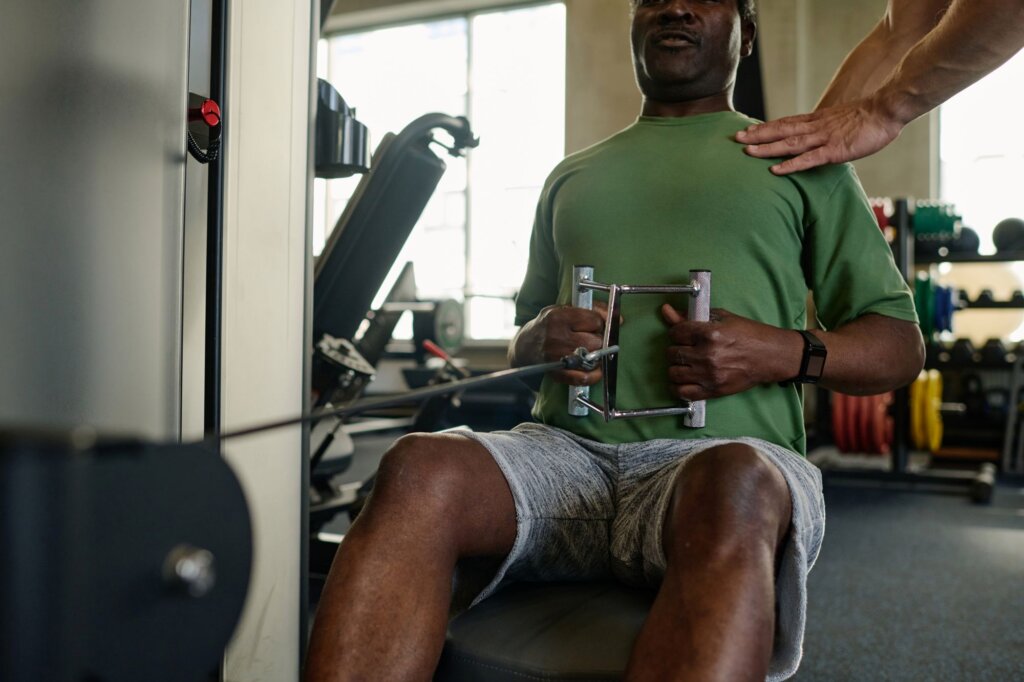As we get older, building and maintaining muscle becomes more important for overall health and independence. While walking and stretching are great, there’s one form of exercise that can get overlooked: strength training.
It’s not just for bodybuilders or athletes. In fact, strength training helps maintain muscle mass, supports bone health, and boosts your energy so you can keep doing the things you love. If you’re in your 50s, 60s, or well into your 70s and beyond, strength training has benefits that go far beyond the gym.
Why Strength Training Matters as You Age
Starting around age 30, we naturally begin to lose muscle mass (sarcopenia). Without intentional counteraction, this loss accelerates over time and can affect how we move, feel, and function.
Sarcopenia can lead to:
- Decreased strength and endurance
- Higher risk of falls and fractures
- Slower metabolism, leading to weight gain
- Reduced mobility and balance
- Loss of independence in daily tasks
Fortunately, strength training is one of the most effective ways to offset these changes. Regularly working your muscles helps them stay strong, which in turn supports your bones, joints, and coordination.

Benefits Beyond the Gym
Strength training offers a wide range of physical, mental, and emotional benefits that extend beyond the gym.
- Boosts bone density, lowering the risk of osteoporosis and fractures
- Increases metabolism, helping regulate body weight and blood sugar levels
- Improves balance and coordination, reducing fall risk
- Enhances flexibility and joint stability, making everyday movements easier
- Supports mental well-being, reducing stress, anxiety, and symptoms of depression
- Promotes better sleep, especially when paired with light aerobic activity
In short, strength training supports a longer, healthier, and more independent life—something we all value as the years go on.
Getting Started
You don’t need to lift heavy weights or join a high-intensity gym to start seeing results. In fact, the best strength training routines are the ones that fit your lifestyle and comfort level.
Here are some accessible ways to get started:
- Resistance bands: Lightweight and easy on the joints
- Bodyweight exercises: Think squats, wall push-ups, step-ups, or chair stands
- Light dumbbells or household items: Cans, water bottles, or even bags of rice
- Gym equipment or machines: Great for controlled, low-impact strength work
Start with 2 to 3 sessions per week, focusing on all major muscle groups: legs, arms, chest, back, and core. Be patient with progress and focus on correct form before adding weight or resistance.
If you’re new to exercise or managing chronic health conditions, check in with your doctor or a personal trainer who specializes in working with older adults. Many community centers and local gyms also offer beginner-friendly or age-appropriate strength training classes.
Tips for Safe and Effective Strength Training
Here are a few things to keep in mind as you build your routine:
- Warm up first with light cardio (like walking) and gentle stretches
- Start slow and gradually increase intensity
- Allow 48 hours of rest between training the same muscle groups
- Listen to your body. Muscle soreness is normal, but sharp pain is a red flag
- Stay hydrated and eat protein-rich meals to support recovery
- Be consistent: Even short 15–20 minute sessions can add up over time
A strong body builds confidence, whether you’re carrying groceries, playing with grandchildren, or simply moving through your day with ease.
Stronger at Every Age
Strength doesn’t have an expiration date. In fact, strength training becomes more beneficial the older we get. By making it a regular part of your routine, you can maintain your independence, support your health, and enjoy a more active lifestyle.
The best time to start? Today. The second best time? Tomorrow. It’s never too late to begin building a stronger, healthier you.
